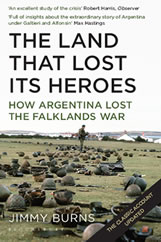Rome may be full of enduring Christian relics, many of them well known and repeatedly visited by pilgrims, but the temporary exhibition currently on show in the crypt of the Venerable English College is a little publicized gem, well worth visiting if only for a reminder of the enduring and rich legacy of English Catholicism and the part played by Jesuits in its defense. But hurry, it send on May 11th, after a short run of less than a month..
Entitled ‘Memory, Martyrs, and Mission’, exhibits included a first ever printed biography of St Thomas of Canterbury and a piece of the penitential hair shirt he wore before being murdered- an apt tribute to the memory of the great English archbishop on the 900th anniversary of his birth, and to whom the College’s beautiful chapel is also dedicated.
Inevitably martyrdom is one of the exhibition’s leitmotifs not least that of the 44 one time residents of the English College who died for their faith. Of the relics on display perhaps the most striking is that honoring the Jesuit priest Edmund Campion who defied the Reformation in England rather than seek safety in Rome and was hung, drawn and quartered in Tyburn. It is the rope that had him pulled on a horse cart, to his brutal execution and which his friend Father Robert Parsons, a major figure in establishing the 16th century ‘English Mission’ of the Society of Jesus later wore around his waist until his own death from natural causes, the martyrdom he avoided by staying in Rome forever weighing on his conscience.
The exhibition illustrates the fascinating story of the Jesuit network that survived as well as suffered the persecution of the English reformation with safe havens set up across continental Northern and South Europe from St Omers to Sanlucar de Barrameda and Seville via Poitoise, Douai, and Valladolid.
The exhibition marks several historical landmarks for the English College such as the bicentenary of its re-opening in 1818 after a later persecution. Following the French invasion of Rome the seminarians were forced to leave and were not able to return until after the Napoleonic era and the restitution of papal states..
That many of the exhibits have been temporary loaned by today’s leading Jesuit boarding school Stonyhurst College in Lancashire is a testimony to the resilience and richness of the school’s cultural heritage here beautifully displayed in several of the most striking exhibits, for which much thanks must goes to its hugely talented curator Jan Graffius.
Of the several stand-out stories narrated in this exhibition, one of my favorites is that of the remnant of Bonnie Prince Charlie’s tartan kilt which survived the Battle of Culloden and which today is the pattern of the girls uniform at Stonyhurst, a school that went belatedly co-ed in recent years.
The other is the choice made by the students of the English College who were evacuated from Rome on the 15th May 1940 and ended up spending the rest of the war continuing their priestly studies in St Mary’s, where Stonyhurst today houses its preparatory school.
Then there is the text accompanying a miniature prayer book belonging to the Rothwell family of Little Woolton, near Liverpool,which notes that the donor was an ex-student of the English College and later Bishop of Shrewsbury Ambrose Moriaty. I found it odd that it omitted to mention-if only as an interesting anecdote- that the surname was used by the author Arthur Conan Doyle –an old Stonyhurst boy-for that of his literary hero’s Sherlock Holmes’s nemesis, the infamous Professor Moriaty.
But that is a minor quibble. I emerged into the Roman sunlight in awe of this original and well-conceived exhibition marking not just nine centuries since Thomas Becket’s birth, but also the foundation in 1568 of the first English seminary in Douai, Northern France by William Allen.
The English College was founded by Allen as a seminary eleven years later in 1579 in a building that was originally opened in the mid 14th century as a hospice for English pilgrims to Rome. The exhibition a fitting tribute to the English College’s a strong identity forged over centuries of witness and mission. Its most iconic statement , which will remain to be marveled over, after the exhibition ends, is the painting in the chapel, above the crypt, depicting a risen Christ, Jesuit martyrdom, and the pilgrims gate to the Eternal City.
Sadly for a few days more only the tastefully lit and delicately laid-out exhibition, will showcase priceless first editions, photographs, and original documents, as well as relics never see under one roof before. It is a necessary compilation of some of the most important acts and personalities that defied anti-Catholic persecution.
I emerged from it deeply moved as well as proud of being a Jesuit educated Stonyhurst alumni. I recommend it to not just to any student of English Catholicism but to any active Christian who feels his or her faith or is worth defending, whatever the challenges or risks.

